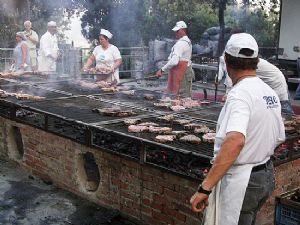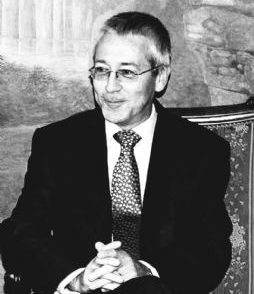The connection between an image and the unconscious, the evocation of emotions and the very essence of being through symbolic form: these are the aims of metaphysical art, the great impetus to the ‘Copernican revolution’ in the contemporary art of the twentieth century. And while surrealism and Dada had their birthplaces farther north, what inspired those movements and the artists famed as their founders was the work of the Greek-born Italian artist Giorgio De Chirico.
Now on display at the Palazzo Strozzi are 100 works from both private collections and some of the world’s leading museums, representing the artistic journey of De Chirico and his subsequent influence on contemporary art.
De Chirico, Max Ernst, Magritte, Balthus: A Look into the Invisible, which runs until July 18, includes some of De Chirico’s most celebrated metaphysical masterpieces, providing a glimpse into the artist’s most eminent period, which inspired the work of the exhibit’s other headliners: Polish-French Balthus, whose enigmatic and controversial paintings rose to fame in the gallery of Pierre Matisse; leading pioneer of the Dada movement and celebrated German surrealist Max Ernst; and René Magritte, the Belgian surrealist best known for his witty and discombobulating play on images.
The exhibit also features pieces by De Chirico’s Italian contemporaries, Giorgio Morandi and Carlo Carrà (the latter known as the co-founder of metaphysical art), and paintings by those artists who emerged from the metaphysical movement, such as Alberto Savinio, Pierre Roy, Arturo Nathan, and Niklaus Stoeklin. The varied provenances of these artists indicate the international reach De Chirico’s influence. Thus the exhibit brings together a body of work that represents not only various nations, but various styles, including the metaphysical, magic realistic, surrealistic and neo-romantic.
The exhibit’s tagline, A Look into the Invisible, was inspired by De Chirico’s claim that the aim of an artist is not to reproduce the existing and concrete that surrounds him, but to ‘show what cannot be seen’. De Chirico achieves the communication of the ‘invisible’-whether distant sensations, philosophical concepts or the profound meaning of that which surrounds us-through precise selection of images and objects, choosing them not for their physical form but for what they represent.
Florence has great significance as the host city for the exhibit: De Chirico’s metaphysical period came to being when he had his ‘Florentine revelation’ of October 1909, when the young artist, aged 21 at the time, found himself seated in piazza Santa Croce where he ‘had the strange impression of seeing everything as if for the first time.’
De Chirico’s metaphysical period, 1909-1919, is characterized primarily by the disquieting mood evoked by the scenes he creates. The beginning of this period was marked by static, disconcerting cityscapes dominated by stylized architectural structures, as in The Nostalgia of the Infinite (1911), which depicts a monumental lighthouse looming over two small passersby, casting long shadows in the eerie afternoon light. Also characteristic of this period are De Chirico’s larger-than-life symbolic objects positioned against geometric backgrounds. A Love Song (1914), with its gargantuan plastic glove, green ball, and statuesque head, is typical of this style, as are his studies of cluttered storerooms.
The exhibit strives to show the continuity among De Chirico’s work and that of the contemporary artists who launched their careers in his wake. The works in this centenary exhibition thus feature common scenery such as empty piazzas, half-open doors and infinite landscapes framed by windows. The often-haunting images evoke common themes as well, not least of which is that of the angst and solitude felt strongly during the interwar period in which these art forms flourished.
An entire portion of the exhibit is dedicated to children, so don’t miss the opportunity to involve the entire family.
See www.palazzostrozzi.it for more information.
DE CHIRICO, MAX ERNST, MAGRITTE, BALTHUS: A LOOK INTO THE INVISIBLE
Until July 18, 2010
Palazzo Strozzi, Piazza Strozzi, Florence
Tel. 055/2469600
Open daily: Friday through Wednesday, 9am to 8pm; Thursday 9am to 11pm.
Admission: €10, reduced €8.50; schools €4; children under 6 enter for free.
Family ticket: €20 (2 adults + 2 kids ages 6 to 18, can visit the exhibition as often as they like).
FLORENCE: A DREAM IN ONE ACT
The Florence International Theatre Company (FITC) has teamed up with Palazzo Strozzi to offer playwriting workshops (in English and Italian) for all ages. Giorgio de Chirico’s paintings will be used as a starting point for the workshops, and FITC invites aspiring playwrights, young and old, to create their own visions of contemporary Florence. The workshop begins in the exhibition, with focused discussions and activities directly in front of the works of art. It then moves into the studios, where theatre professionals will take participants through a series of exercises and guide them through the process of writing a short one-act play. The best scripts will be published online and presented in a public performance in the courtyard of Palazzo Strozzi before the exhibition closes on July 18, 2010.
The workshop for children ages 11-13 and the first workshop for children 14-16 have already been held. The remaining sessions are as follows:
Ages 8-10: Saturday, April 10, 3pm to 6:30pm
Ages 14-8: Thursday, March 25, 5pm to 8:30pm
Adults: Thursday, April 22, 5pm to 8:30pm
Participation is free with admission to the exhibit, but reservations are required (15 participants maximum). To reserve a place, call or email : prenotazioni@cscsigma.it.
For the schedule in Italian, visit www.florencetheatre.com or contact Palazzo Strozzi.







